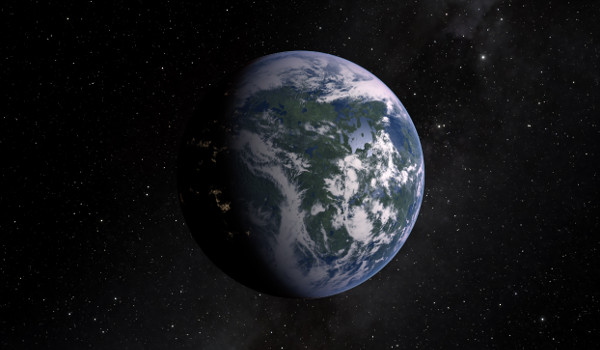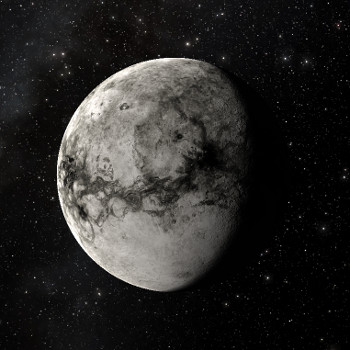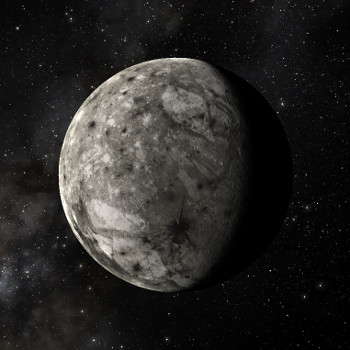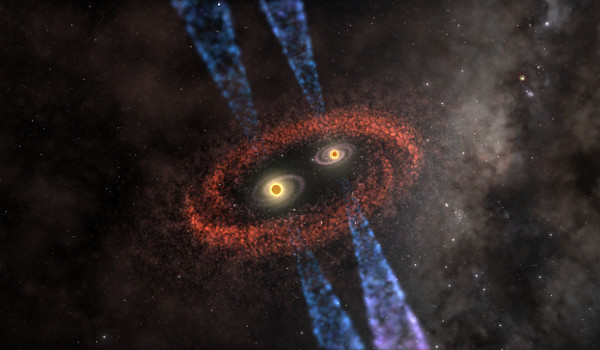Lavender Skies
Two worlds. Two people. One unlikely alliance...
Belle Hades

Physical Properties:
Radius: 5,469.6462 km (3,398.6806 miles; 0.8576 R_earth)
Mass: 0.6054 M_earth
Density: 5.2944 g/cm3 (0.96 D_earth)
Gravity 0.8233 G
Escape Velocity: 9.397 km/s (5.839 mile/s)
Sidereal Rotation Period: 26 hours, 26 minutes, 54 seconds
Day Length: 26 hours, 32 minutes, 49 seconds (based on when the Barycenter reaches zenith)
Axial Tilt: 26.4052°
Orbital Properties:
Orbital Distance: 1.1336 AU (169,593,637.23 km / 105,380,600.56 miles) (Moist Greenhouse Portion of HZ)
Year Length: 325.0217 Earth Days (293.9347 local days; 0.8898 Earth years)
Eccentricity: 0.0119
Inclination: 1.4662°
Ascending Node: 313.9975°
Argument Of Pericenter: 324.2635°
Mean Anomaly: 177.8046°
Moons
Lethe:
Radius: 1,326.2126 KM (824.0703 miles; 0.2079 R_earth)
Unfortunately, due to Lethe's proximity, and Belle Hades' sidereal rotation period, the orbital zone needed for geostationary orbits, or indeed, any geosynchronous orbit at all around Belle Hades, is gravitationally unstable. As a result, services such as communications and meteorology have had to take alternative routes for productive functioning, especially during Belle Hadean civilization's formulative years as a space-faring civilization.
Mass: 0.005454 M_earth
Density: 3.346 g/cm3 (0.6067 D_earth)
Distance: 98,304.3782 km (61,083.5087 miles)
Orbital Period: 4 days, 13 hours, 0 minutes, 51.7 seconds
Tartarus:
Radius: 2,258.2968 km (1,403.2406 miles; 0.3541 R_earth)
Mass: 0.027646 M_earth
Density: 3.424 g/cm3 (0.62283 D_earth)
Distance: 316,172.3226 km (196,460.3731 miles)
Orbital Period: 25 days, 15 hours, 2 minutes, 1.4 seconds
Because of Tartarus' mass and distance, its mutual barycenter with Belle Hades and Lethe resides outside Belle Hades' physical radius, similar to Pluto and Charon.
Planetology
Description: In spite of Belle Hades' small size, the planet is much more volcanically active than Earth, due in part to its young age, but also due to the significan tidal stresses exerted by its two moons. However, tectonic activity is only now beginning, relatively speaking, and making Belle Hades experience "growing pains." That is, it suffers, on occasion, massive earthquakes, the majority of which are well over several magnitudes on the Richter Scale, signalling the beginning of continental drift.
Internal Structure:
Description: Belle Hades' core radius to planet radius ratio is approximately ten percent higher than the planet Earth's. Belle Hades' interior structure is otherwise similar to that of Earth's, with a solid inner core, a liquid outer core, viscous lower and upper magma mantle, and oceanic and continental crusts.
Geography:
Description: The planet Belle Hades has low surface relief, resulting in oceanic tides affecting much greater areas. The tallest "mountains" on Belle Hades are only comparable to that of the Appalachian Mountains in the eastern United States. There are only two continents on Belle Hades, a large one and a small one. The large continent is gigantic, and is primarily a super-continent, while the smaller one is about the size of Australia. However, the boundaries of the continents are poorly defined, as Belle Hades hosts countless large islands out at sea, and many, many large lakes on both continents, with the coastlines taking a variety of confusing shapes that make it difficult to tell which is which. About slightly more than half of the planet's land is in the southern hemisphere.
Atmosphere:
Surface Pressure: 107.303 kPa; 31.69 barometric inches (1.059x Earth).Composition: 69% Nitrogen, 27% Oxygen, 0.82% Argon, 0.029% Carbon Dioxide, 3% water vapor.Description: The atmosphere of Belle Hades is thicker than that of Earth's, with a higher surface pressure, yet has a somewhat similar composition, with the exception that the water vapor content and the oxygen content are higher. Fortunately, the atmosphere is safe for some Earthling life forms, including humans, to breathe. While the sky is blue like on Earth, it does display lavender hues during sunrises and sunsets on days that Hades is either first to rise or last to set, due to Hades emitting light at different wavelengths. The same thing also happens when Hades transits, or passes in front of, Lilith, but to a lesser degree, and regardless of the time of day.
Climate:
Average World Temperature: 89.18° F (31.767° C)
Average World Dew Points: 87.35° F (30.75° C)
Average World Precipitation: 98 inches per year (2,489.2 millimeters per year)*
Average Global Lightning Frequency: 309 per 1 km² of land (23 per 1 km² over sea)*†Description: The planet Belle Hades is considerably warmer than Earth, yet has no deserts due to the increased water vapor content of the atmosphere. Belle Hades has also never seen a single flake of snow in its entire history, even at the poles. And even at the center of the planet's super-continent, the climate is predominantly, oppressively humid. Due to multiple factors, the amount of lightning produced in weather systems is many times greater than on Earth, and thus, extremely high rates of lightning occur in every storm, instead of solely severe storms as on Earth. Belle Hades' "humid greenhouse" climate makes it among the hottest life-sustaining worlds in the universe, as it is exceedingly rare for such worlds to maintain such high heat and humidity for more than a few dozen million years at most. As a result, native inhabitants travelling to virtually any other world in the universe that doesn't have at least regions of its surface bearing similar climes, difficult to adapt to.
* = Measured in Earth Years
† = Measured number of Cloud-to-Ground strikes
Biosphere:
Biomass: 717 billion tonnesDescription: The Belle Hadean biomass is considerably higher than that of Earth's, in spite of the planet's small size and the presence of an advanced civilization. Almost all land on Belle Hades is covered in a globe-spanning jungle, a result of the planet's warmer temperature and the higher water vapor content of the atmosphere. There have been only two instances of Belle Hadean biology being compatible with Earthling biology; most notably human-Belle Hadean inter-breeding. The only other instance of Belle Hades being compatible with Earth is Belle Hades having felis silvestris catus (cats) with an extra fur color (blue). It should be noted that the only natural predators on Belle Hades are small animals.
Belle Hades harbors a globe-spanning jungle, making it one of the few worlds in the universe to be considered a "single-biome" world, before counting the oceans. By day, the sounds of the jungle are unfortunately nearly non-existant, as Belle Hades' fauna are still recovering from a global ecological disaster that took place approximately seventy-four thousand years ago (sixty thousand Earth years), but at night, the insect populations that survived and grew to inhabit nearly every corner of Belle Hades, create what is perhaps the most beautiful night-time chorus of jungle sounds of any planet in this part of the galaxy. The night time insect choruses combined with the intense Belle Hadean lightning storms is what gave the planet its name.
Hydrosphere:
Global Ocean Cover: 58%
Average Ocean Depth: 8,942 feet (2,726 meters)
Global Ice Cover (land and sea): 0%Description: Belle Hades' oceans are relatively shallow, allowing life to proliferate close to the oceans' surface much further from the mainland than if the oceans were deeper.
Present Anomalies
There are a few anomalies present on Belle Hades. Perhaps the most well-known anomaly is the presence of naturally occuring plutonium, a radioactive metal that is otherwise created only through artificial means, for use in nuclear power and weaponry. Because of this, and because of the planet's higher uranium content, a psychological anomaly exists within Belle Hadeans; they are quite fond of nuclear explosives. In spite of this, they show enough self-control to refrain from detonating nuclear weapons on their planet, although they still maintain large arsenals. Perhaps the most interesting thing about this anomaly is that most of the uranium and plutonium are located deep underground, so as a result, the radioactivity levels on the surface are only marginally higher than on Earth, making Belle Hades safe for Earthlings to walk about unprotected.
A second anomaly is the presence of another large moon residing inside of Tartarus' orbit, named Lethe. Lethe is supposed to have been a captured body, so therefore, it was eventually revealed that Belle Hades wasn't the only planet in the system when Delta Trianguli first formed.
Belle Hades also exists in spite of Delta Trianguli's observed low "metallicity," with Lilith and Hades' being only ten to thirty percent as metal-rich as Earth's sun. It is sometimes said that Belle Hades and Tartarus came from outside the system, although it has been proven time and again that Belle Hades formed with Delta Trianguli. Recent discoveries, however, have revealed that terrestrial worlds can indeed form around low metallicity stars; whereas low metallicities simply have the tendency to stunt the development and growth of gas giants.
One of the largest islands on Belle Hades contains a peculiar inland sea. This inland sea very clearly takes the shape of the symbol of the female sex, with the bottom of the cross taking the shape of an upside down heart. It seems artificial, but it is quite clearly naturally occurring.
It is well known that the physical size of a planet affects the size of its surface features, as well as the size of the life evolving on it; the smaller the planet, the lower gravity there is; the larger the surface features and life forms are. However, on Belle Hades, the opposite is true: being smaller has made both surface features and life forms equally smaller, to a point. In actuality, the surface features and life forms are simply only shorter, not necessarily thinner as well. Thus, with Belle Hades being 85.76% as large as Earth, a mountain, for example, would be 85.76% as high as a mountain on Earth, but would still cover the same land area. The same goes for all life on Belle Hades.
The biggest anomaly, although not necessarily the most well known, is the planet's ability to support complex life despite being almost 0.2 Earth masses below the lower limit proposed for planetary habitability. That lower limit is 0.8 Earth masses. Belle Hades is 0.6 Earth masses. The reason for the 0.8 Earth mass limit was that planets below that limit were too small to initiate plate tectonics, or continental drift. Plate tectonics were considered essential for the development of complex life, since it would enable life to proliferate across the entire planet over geologic time scales. Belle Hades has somehow managed to have prolific, globe-spanning life in spite of the lack of plate tectonics. However, recent advances in Earthling knowledge have frequently proved time and again that sometimes, things once considered impossible, have turned out to be possible anyway.
Yet another anomaly is that the national anthem of Belle Hades is a song that is present in a popular Earthling video game, which would imply that the Belle Hadeans stole the song. However, it has been proven over and over that the song has been the planet's anthem for the past four thousand years. It is suggested that the deposed alien regime may have taken the song from Belle Hades and somehow sneaked it onto the Earthling's video game.
One of the strangest anomalies, however, is the fact that Belle Hades is the sole planet orbiting Delta Trianguli, not to mention being embedded inside an asteroid belt. It was eventually revealed to be the result of the alien regime taking away the other planets and placing them around other stars, as well as detonating a small terrestrial to create the asteroid field, as a punishment of some sort.
The final anomaly is Belle Hades' obliquity, or axial tilt. It is unusually high for a planet with two large moons in such close quarters. It should be around 5 to 13 degrees, yet it is at 26 degrees. Most of the time, the presence of a large moon close by keeps the parent planet from precessing wildly out of control, due to the moon's gravity, with higher axial tilts the further away the moon is.
Planetary History
Belle Hades was formed approximately 1.9 billion years ago around the star known to Earth as Delta Trianguli. Soon after its initial formation, Belle Hades suffered a massive collision similar to the one that formed Earth's moon. The resulting moon, Tartarus, was huge compared to Belle Hades; over 38% the size of Belle Hades (Earth's moon is only 27% the size of Earth).
About eighty million years after that collision, Belle Hades suffered another large collision, leaving a huge crater at the planet's north pole that still exists today, albeit eroded. It was soon after this collision that Delta Trianguli entered a section of the galaxy that was heavily populated with water-bearing objects, causing periods of intense bombardment that delivered Belle Hades' oceans, and eventually its life. It was during this time that an asteroid belt formed between Belle Hades and the two suns. And since Belle Hades is right on the outer edge of the asteroid belt, it will have a greater frequency of asteroid impacts than normal for quite some time.
Over the course of the next billion years, the life on Belle Hades, which had an increased mutation rate due in part to the added radiation from the second sun, the higher uranium content, and the presence of natural plutonium, managed to build up the the planet's oxygen (and resulting ozone layer) at a rate much faster than on Earth. Halfway through this period, Belle Hades' magnetic field was established, much Earlier in its life than Earth's.
About eight hundred million years ago, complex life arose on Belle Hades, only to be wiped out repeatedly by Hades having flare-ups that are more typical for a star of the spectral class "M". Only in the past few hundred million years has Hades managed to calm down for good, allowing complex life to establish a permanent presence on Belle Hades.
Eighty million years ago, Belle Hades, with the help of Tartarus, captured a planetary body, Lethe, that wandered in from deep space before being captured by Belle Hades' two suns. Lethe came within just a few thousand kilometers above Belle Hades' surface, creating apocalyptic tides that nearly had complex life wiped out once again, which fortunately, paved the way for the current sapient species to evolve. Complex gravitational and tidal interactions between all three bodies ensured Lethe's demotion to moon status, it having previously been at least a dwarf planet. To this day, Lethe's scars from its close encounters remain to this day.
Future
Because of Delta Trianguli's young age, Belle Hades is expected to be habitable for at least the next two billion years, a time frame which will probably be extended a few additional billions of years due to the presence of Belle Hadean civilization and its remarkable environmental protection programs.
In the next few dozens of millions of years, plate tectonics will establish a foothold on Belle Hades. There are signs, clearly visible from space, that it is already under way, as the super-continent already seems to have broken up in some places.
Due to effects called "tidal acceleration," the Belle Hadean day will get considerably longer. As the planet's rotation pulls on Lethe, Tartarus, and vice versa, the two moons will slowly drift away while the planet rotates slower and slower. This influences Belle Hades' habitability time somewhat, although exactly how much remains to be seen. It is expected that both moons will remain with Belle Hades for the remainder of Delta Trianguli's lifetime. Delta Trianguli's total lifetime has yet to be determined, but Lilith's life expectancy is about 8.3 billion years.
In Lilith's final billion or two years, its heat output will be enough to vaporise Belle Hades' oceans, and Belle Hadean civilization, if still around, will have to relocate. Relocating the planet itself remains up in the air, as it may or may not cause a mass extintion, which would be the result of having to adjust to the different lights of new suns.


